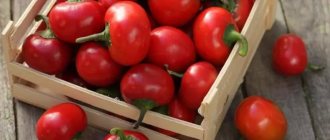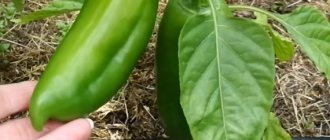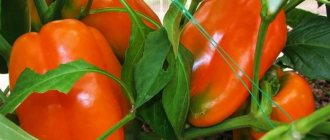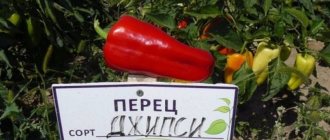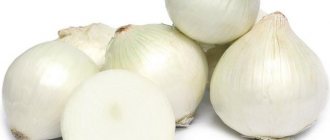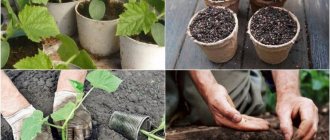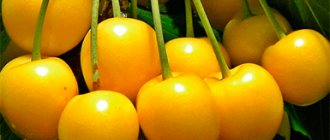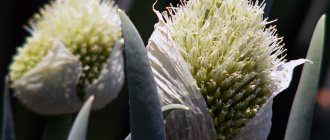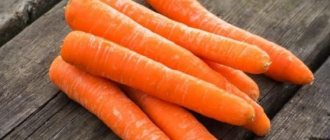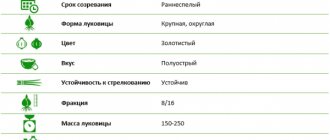Pepper light has been gaining popularity among our people in recent years for many reasons. These are the health benefits of the plant’s fruits, and a pleasant aesthetic appearance, and simply, the desire to somehow diversify the home collection of decorative flowers with a fruit plant.
As for growing peppercorns on the windowsill of your home, this is quite a simple matter and does not take much time and effort, as we invite you to see by reading this article. We will also tell you about the benefits of pepper and the features of caring for the plant.
Types and varieties of plants, appearance
Hot peppers belong to the nightshade plant family. In open ground, the plant can reach a height of 60-100 cm; pepper on the windowsill, which is grown at home, reaches a height of 30-40 cm. The plant has simple, single or clustered long- or short-petioled leaves, the color of which varies from green to olive-black-green. The bush blooms with large axillary, single or clustered flowers that have a white, greenish or purple tint.
The fruit is a false hollow multi-seeded berry of various shapes and sizes. Depending on the variety, the fruit can be red, yellow, brown or black-olive in color. The fruit has a spicy aroma and taste, ranging from bitter to hot: the seeds and internal plates give peppercorns their spiciness.
The following varieties are suitable for growing at home:
- Aladdin - the height of the bush is 35-40 cm, the variety is famous for its rapid ripeness and good yield. The fruits are cone-shaped and vary in color from cream to purple to deep red.
- Ogonek - the height of the bush can reach 35 cm. Valued for its decorative appearance and pleasant aroma. From one bush you can collect up to 100 peppercorns, which ripen 3.5-4 months after planting. The color of the fruit varies from soft green to bright red.
- Confetti is an unusual variety: the bush can simultaneously contain fruits of purple, yellow, orange and red colors.
Planting at home and the intricacies of growing peppers
Good development of the shrub, its flowering and fruiting is ensured by a minimal but necessary set of agrotechnical measures; for the growth of pepper it is necessary to provide a number of comfortable conditions.
Home planting and cultivation begins with choosing good seeds or planting material; a perennial plant can successfully bear fruit for 6 years, and for good yield it is recommended to pollinate the flowers yourself.
Where and how does it grow
Pepper prefers sunny places, so in the first 6 months after planting it is placed in a south-facing window or additional lighting is installed above the bush. For comfortable growth, the plant requires a temperature of at least 22 degrees Celsius. Watering is carried out as the soil dries, and in the summer, the bush is additionally sprayed with a spray bottle.
Storing fire pepper
After the harvest is harvested, the question arises of where to store the pepper, because the collected fruits cannot always be consumed on the same day, especially if there are several plants, and besides, you increased the harvest by pollinating with cotton wool. In this case, a dry container that should not be closed is suitable for storage . We recommend using a glass jar or cut glass.
In the container, the light pepper should be in a dark place, inaccessible to children and animals . The shelf life of pepper is quite long, because... after drying, it is able to lie without changes in structure for a very long time, however, the vitamin potential still decreases during long-term storage.
Benefit
Hot substances (capsaicins), vitamins and minerals that make up the flame pepper have a beneficial effect on the body. When eating fruits, a person’s pulse quickens, sweating increases, and endorphins (chemical compounds that help relieve pain and cause emotional uplift) are produced. That is why it is recommended to introduce pepper into the diet in winter, in order not only to cope with the winter cold season, but also to make it easier to endure winter melancholy.
Care required by pepper for normal growth and fruiting
Timely spring flowering indicates that favorable conditions have been created for the pepper, it is well watered and planted in nutritious soil; to increase the number of ovaries, it is recommended to carry out manual pollination.
For pollination, a soft, not wide brush is used, with which pollen is transferred from one inflorescence to another, and do not forget about staking the plant, this will support the main stem during abundant fruiting and will allow you to preserve the entire harvest of hot pepper.
Application
Due to their chemical composition, peppercorns are used in cooking, medicine and cosmetology.
In cooking
Hot peppers are popular in many cuisines around the world: they are added to soups, vegetable stews and side dishes, and to meat and fish dishes. Medium-hot peppercorns are pickled, salted, fermented and used in marinades. Dried pepper is crushed and used as a seasoning. It goes well with basil, coriander, thyme and dried garlic. Hot peppers are an essential element of curry seasoning and Tobasco sauce.
In medicine
The following medicinal properties of hot pepper are known:
- normalizes blood circulation;
- improves liver function;
- helps cleanse blood vessels from bad cholesterol;
- helps with sore throat and severe cough;
- prevents the development of cancer cells;
- has a positive effect on potency;
- resists aging of the body;
- helps with insomnia;
- has anti-inflammatory and bactericidal effects.
Regular consumption of pepper in small quantities helps strengthen the immune system - this is associated with the vegetable’s ability to disinfect the intestinal tract, removing all toxins and harmful substances from the colon.
In pharmacology, capsaicin from hot peppers is used to make analgesics. Based on it, many painkillers, warming ointments, creams and tinctures have been created. Pepper plaster is used for muscle and joint pain, mustard plasters are used to treat cough, cellulite and stretch marks. Tinctures are taken orally to aid digestion, and pepper-based ointments are used for upper respiratory tract catarrh, radiculitis, arthritis, myositis and rheumatism.
When losing weight
Hot pepper light will become an assistant for those who are watching their figure and weight. The vegetable improves metabolic processes, stimulates blood circulation, which promotes the breakdown of fat cells. In addition, hot peppers help reduce the salt content in food, because you don’t need to add a lot of salt to spicy food, it already has a bright taste. And reducing salt in the diet also contributes to weight loss.
In cosmetology
Hot peppers are also used for cosmetic purposes. It is included in masks for aging skin and tinctures to improve hair growth and thickness.
Collection and storage of fruits
The first harvest can be harvested in an average of 120 days and can be obtained all year round when grown at home.
The fruits are stored in the refrigerator from several weeks to a month . For longer storage, it is better to pre-treat them:
- dry;
- to freeze;
- marinate in vinegar;
- use in homemade preparations.
There is no need to reinvent the wheel, just use proven tips and you will be provided with a harvest all year round!
Pepper is a vegetable with high yield and excellent taste. To get the maximum result, it is enough to follow the rules of agricultural technology and promptly respond to the first manifestations of diseases or attacks of harmful insects. Read about the nuances of growing varieties Polet, Partner, Ramiro, Jalapeño, Aladdin, Habanero, Carolina Reaper, Orange and Californian Miracle on our Internet portal.
How to grow, care, pests and diseases
Indoor pepper flame growing and care
The following substrate is most suitable for growing peppers: one part each of peat, leaf and turf soil and 1/4 part of the mass - sand. If planting is done in special soil, then an earthen mixture for eggplants, tomatoes and peppers is suitable.
Indoor pepper planting and care
It is better to sow the seeds immediately in a deep pot to avoid diving after the sprouts emerge. First fill the bottom of the pot with drainage made of expanded clay or pebbles, and fill the top of the pot with nutritious soil. For the first six months, keep the pot on southern windows or provide additional lighting with a blue-violet lamp. Water as the soil dries. To fertilize, use a complex fertilizer labeled for peppers, adding them to the soil once every 14 days.
Diseases of indoor pepper
Most bush diseases are caused by improper care:
- Rot of the root system is provoked by excessive watering and increased air temperature in the room. Digging up the bush, drying its roots and replanting it in new soil will help solve the problem.
- Dropping leaves. The problem is caused by insufficient lighting or watering with cold water. Install additional light and leave the water at room temperature.
- Spider mites - use the Fitoverm insecticide.
Plant care
After the pepper has grown significantly and become stronger, it needs to be transplanted into a larger pot. This way the plant can develop faster and reach the flowering stage.
Light pepper loves moisture and does not tolerate excessive dry soil . Although the light feels great in direct sunlight, it still needs to be periodically moved into the shade. Many in the summer
put the plant on a balcony or loggia, which is quite acceptable. But most often pepper grows on the windowsill.
It will not be superfluous to periodically loosen the soil in which the pepper grows. However, this must be done carefully so as not to damage the roots located closer to the surface of the soil.
It is not recommended to fertilize the plant with chemicals , because you will eat its fruits. Alternatively, you can use fallen leaves of other domestic plants for fertilizer, which must be crushed and added to the soil with the pepper. But this is optional.
Make sure that aphids do not appear on the leaves of the pepper . In this case, use a well-known soap solution and remove the most damaged leaves.
Landing
Seeds are sown 2 months before planting in the ground if cultivation is planned in the garden. For home cultivation, sow directly into a pot. Planting depth is 0.5-1 cm.
The soil for peppers should contain part of the garden soil, part of the peat or humus and part of the drainage - sand or sawdust. The mixture is disinfected with a solution of potassium permanganate.
Before planting, the grains are treated with a stimulant. The crops are moistened and covered with glass or film. Germination temperature - +25 degrees. Seedlings are provided with long-term good lighting.
Picking is carried out after the appearance of two leaves. Harden off before transferring to the garden.
Advantages and disadvantages
Pros:
- burning rich taste;
- very decorative bush with beautiful fruits;
- ease of care;
- resistance to parasites;
- good yield;
- excellent keeping quality and transportability;
- high commercial qualities;
- excellent immunity to diseases;
- the opportunity to grow crops on the windowsill;
- benefits health;
- long fruiting period.
Minuses:
- Quite a long gestation period.

